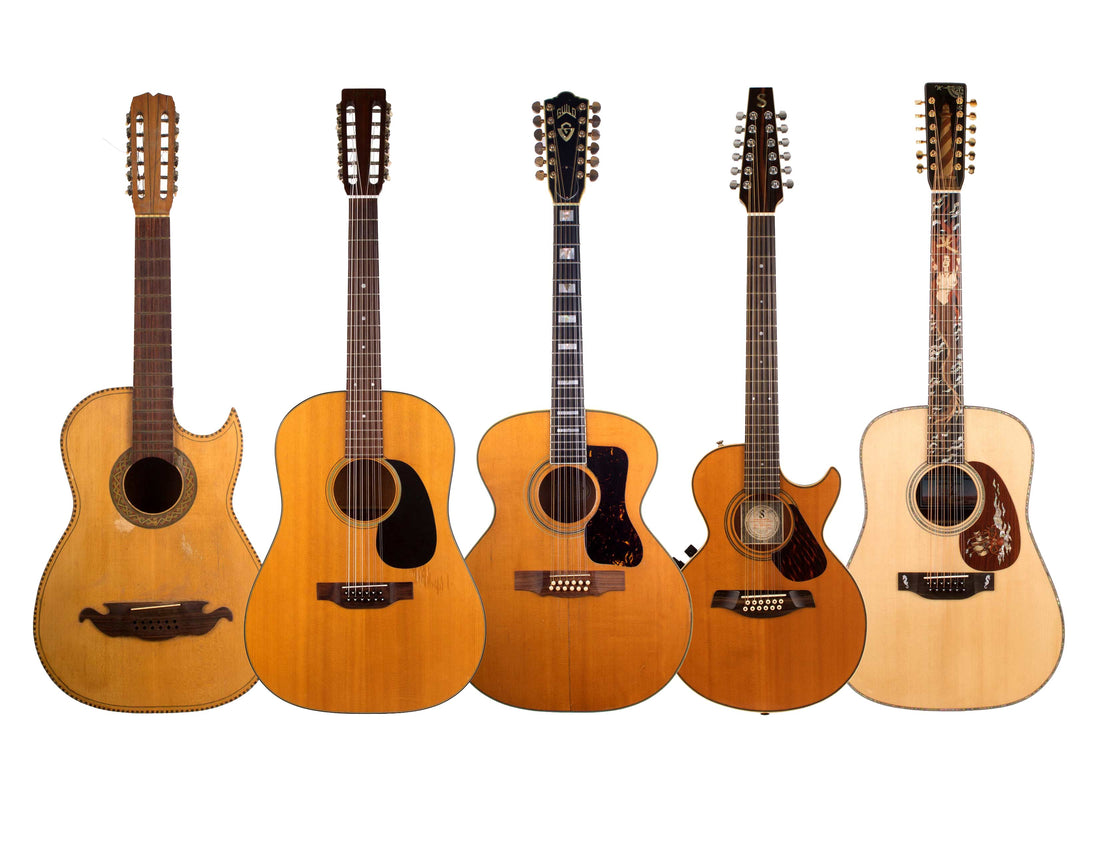The 12-string guitar may have originated earlier than many people think. I was told, back in the early 1960s by someone who had already been dealing in and studying the history of American fretted instruments for many years, that the original intention of the double unison and octave strings was to emulate the sound of a piano. This would have been around 1900, when ragtime was still a big thing in American music. By the 1920s-30s American guitar manufacturers had caught on, with relatively inexpensive instruments being all that were being made. The big name for these at the time was Stella. We would occasionally still see some of these older ones come around in the 1960s-70s.
Probably the earliest well-known player of the 12-string was Huddie Ledbetter, who went by the name of Lead Belly, in the 1930s. He was recorded by Alan Lomax, and his versions of “Goodnight Irene” and “Midnight Special” became famous. The rise of the folk group The Weavers, starting in the late 1940s with songs that actually became national hits, brought the 12-string guitar to greater attention, being used by Pete Seeger along with his five-string banjo. Pete's guitar was quite unique, having had a triangular soundhole among other features, and had been built for him by Stanley Francis of Liverpool. You wouldn't forget that guitar once you'd seen it and heard it.
By the 1960s American companies had gotten the message that people wanted 12-string guitars and Guild was one of the first to be on top of it, making iconic models in their original factory in Hoboken, NJ. Gibson got on the bandwagon in the mid-60s with both large and small-bodied models. Martin, ever the most conservative, took the brilliant step of making 12-string versions of their original 1917 Dreadnaught with a 12-fret neck and slightly longer body than the Dreadnaughts we’re so familiar with today. Bob Taylor, of Taylor Guitars, started his guitar-making career by hand building a copy of a Guild 12. The most notable electric 12-string guitars were brought out by Rickenbacker, also in the 1960s and the Byrds, with Roger McGuinn at the helm, blazed across the pop charts with their hits, all of which had the unmistakable sound of the Rick 12. What many people don't know is that the biggest part of the memorable sound of the Rick 12 comes from the fact that their octave pairs are strung in reverse order to the standard acoustic 12. Octaves of the G, D, A, and low-E pairs are strings 5, 7, 9, and 11 instead of 6, 8, 10, and 12 found on acoustic 12’s. I’ll betcha those of us who have Byrds hits permanently embedded in our brains are hearing that sound as we're reading this. There were other top artists of course who became known for their use of a 12-string guitar, most famously Rev Gary Davis, Barry McGuire (“Eve of Destruction”), John Denver, The Beatles, and more. It’s a sound for the ages, can't get it nowhere else.

